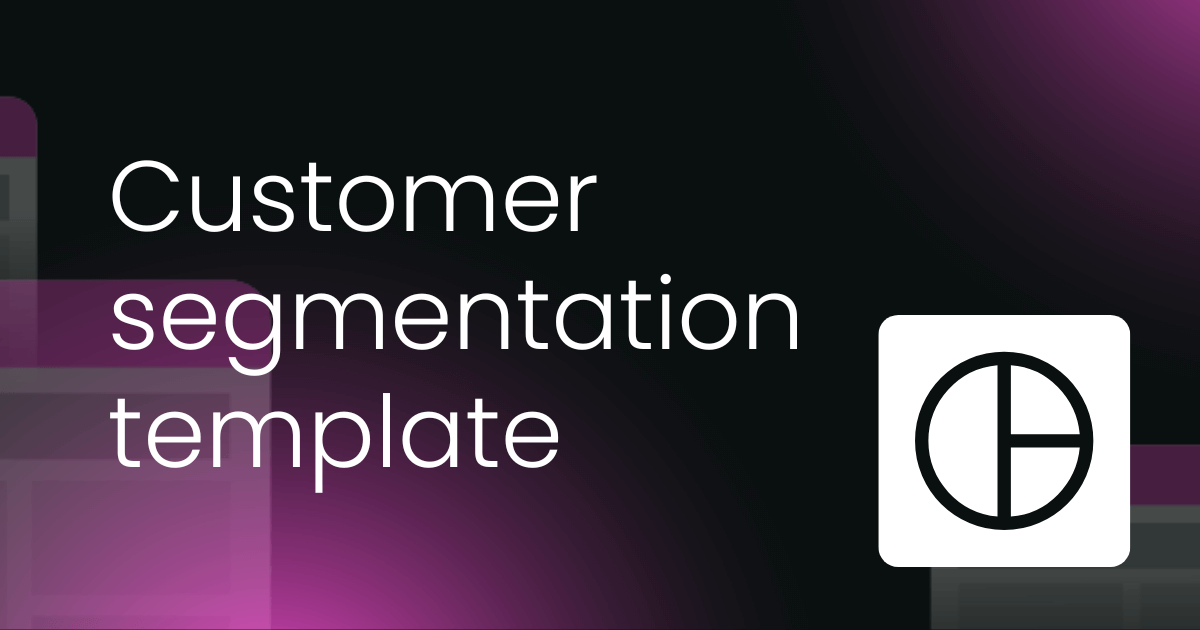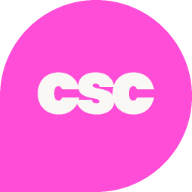Customer segmentation is a fundamental strategy for any customer success team. It's like building a bridge.
Just as you wouldn't start building a bridge without a blueprint, a customer success team shouldn't start their work without a clear understanding of their customer base.
In that spirit, let's dive into the strategic importance of customer segmentation and how you can go about it. In this article, we’re going to cover:
- What customer segmentation is
- The strategic importance of customer segmentation for a customer success team
- Understanding how efficiency
- An example of segmentation
- How to carry out a customer segmentation strategy
What is customer segmentation?
Customer segmentation is an indispensable tool in the arsenal of any successful customer success team. It refers to the process of dividing customers into groups based on common characteristics such as interests, demographics, behaviors, and spending habits.
It's like a compass guiding a ship, enabling the team to understand the diverse needs of their customers and tailor their approach accordingly.
Apart from that, a proper customer segmentation strategy can help the business understand which are the most valuable customers for the organization and take action or define specific strategies for retention of this group.

The strategic importance of customer segmentation strategy for a customer success team
The keyword to any customer success strategy is “understanding.” The more a team understands their customers, the better they can serve them.
Customer segmentation helps in building this understanding by providing a detailed picture of who the customers are, their needs, preferences, and tendencies.
When a team knows that “Customer A” prefers e-mail communication, while “Customer B” is more comfortable with phone calls, they can personalize their approach, leading to increased customer satisfaction and success.

Tailoring products and services
Customer segmentation can also help in tailoring products and services according to customer needs. For instance, if a segment of customers is identified as highly tech-savvy, the team can focus on offering advanced features to this group, while for a segment of less tech-oriented customers, the team can provide more guidance and support.
This way, the team can ensure that they are providing the right product or service enhancements to the right customers.
Improving customer retention
Customer retention is another area where customer segmentation can play a significant role. By understanding the different customer segments, the team can identify the factors that lead to customer churn within each group and take proactive measures to mitigate them.
For example, if a particular segment has a high churn rate due to a lack of onboarding support, the team can prioritize improving onboarding procedures for this group.

The efficiency puzzle
Enhancing efficiency is like finding a shortcut in a marathon – it can provide you with a considerable advantage. Now, let's dive into how customer segmentation can act as this beneficial shortcut for a customer success team.
Identifying optimal communication channels
Firstly, customer segmentation allows for the identification of optimal communication channels. For example, if a particular segment of customers is more responsive to email communications, then the customer success team can use this channel to communicate with that segment, rather than wasting time and resources on less effective methods.
This is like knowing the preferred language of your audience and speaking to them in that language, rather than trying to communicate in a language they barely understand.

Streamlining support services
Secondly, customer segmentation can streamline support services. Different segments of customers may have different levels of expertise with a product or service. By recognizing this, a customer success team can tailor their support services to meet the specific needs of each segment.
For example, a segment of less tech-savvy customers may require more in-depth tutorials and guides, while a segment of more tech-savvy customers may prefer a self-service approach. By providing each segment with the type of support they need, a customer success team can increase their efficiency and improve customer satisfaction.
Reducing trial and error
Thirdly, customer segmentation reduces the amount of trial and error. Instead of employing a one-size-fits-all approach and having to adjust strategies when they don't work, a customer success team can use customer segmentation to identify the most effective strategies for each segment from the outset.
This is like studying for a test based on the topics that the teacher has outlined, rather than trying to cover the entire textbook and hoping that what you studied will appear on the test.
Empowering proactive measures
Lastly, customer segmentation empowers proactive measures. By understanding the characteristics and tendencies of different customer segments, a customer success team can anticipate issues before they occur and take pre-emptive action. This leads to fewer fires that need to be put out, which significantly enhances efficiency.

An example of effective customer segmentation
Oh, I just love a good example to illustrate a point! So, let's imagine a company called something like, "Healthy Habits," which provides an online platform for personal training, nutrition planning, and wellness resources.
Now, Healthy Habits has a large and diverse clientele, ranging from college students to busy professionals, and senior citizens. Each of these segments might have different communication preferences, right? So, let's see how customer segmentation could help Healthy Habits' customer success team identify the best communication channels for each of these customer segments.
For college students, the customer success team might find that social media and push notifications on the app are the most effective ways to communicate. This is because younger generations often prefer quick, easily accessible information, and they're frequently checking their phones.
So, if Healthy Habits has a new workout plan or a flash sale, sending a quick message via Instagram or a push notification could be the most efficient way to reach this segment. It's like throwing a party when you know your friends are already in town, rather than when they are away on vacation!
Their customers who are busy professionals, on the other hand, might prefer email communications. Despite having busy schedules, they check their emails regularly throughout the day. Therefore, email could be the best way to provide these customers with more detailed information about new features or services. It's like sending a formal invitation for a business meeting – straightforward, professional, and can be addressed at a convenient time.

Now, let's consider the senior citizens. They might not be as comfortable with technology as the younger segments, and they might prefer more traditional methods of communication, like phone calls or even printed mailers. For important updates or changes, a phone call from a customer success representative could be the most effective way to communicate with this segment. It's like stopping by your grandparents' house for a chat, instead of sending them a text.
So, you see, by understanding the characteristics and preferences of each customer segment, the customer success team at Healthy Habits can tailor their communication strategies accordingly, which in turn can result in more effective and efficient interactions.
And when communication is efficient and effective, it's like a well-choreographed dance – everyone knows their moves, the rhythm is just right, and the performance is simply spectacular!

How to carry out a customer segmentation strategy
Customer segmentation is a fantastic way for your customer success team to better understand and serve your clients. Here's a simple step-by-step guide to help you create your own segmentation strategy:
1. Identify the criteria
Start by defining the criteria you'll use to segment your customers. These could be based on factors like customer behavior, demographic details, purchasing power, product usage, or business size. Always remember that it needs to make sense from the business perspective. The more specific, the better!
2. Segment your customers
Once you've identified your criteria, divide your customers into segments. Each segment should share common characteristics according to the criteria you've defined. At this stage, you should create customer personas to represent each group to help bring the segments to life.
3. Understand each segment
Now, dive deeper into each segment. Analyze their needs, preferences, and challenges. This will help you understand what they value most and how your product or service can meet their needs.
4. Create customer journeys
For each segment, map out the customer journey. This should include every interaction a customer may have with your company, from initial discovery to purchase and post-purchase.
5. Personalize your approach
Use the insights you've gathered to tailor your customer success strategy for each segment. This could mean personalizing your communication, offering specific products or services, or providing targeted support.
6. Monitor and adjust
Finally, remember that customer segmentation isn't a one-time process. You'll need to continuously monitor your segments and adjust your strategies as your customers' needs change.
At this stage, you should also have a predefined set of KPIs. It helps to keep track of the performance of each customer success agent and allows them to act proactively in case of need.

Final thoughts
Customer segmentation is the backbone of strategic planning for any customer success team. It allows them to navigate the complex landscape of customer needs and preferences, enhances their efficiency, allows for the tailoring of products and services, and improves customer retention.
It's like a master key, opening up the door to customer success or like having a map during a road trip – it leads you to your destination faster and with fewer detours.
Investing in customer segmentation isn't just an option, it's a strategic necessity.



 Follow us on LinkedIn
Follow us on LinkedIn





